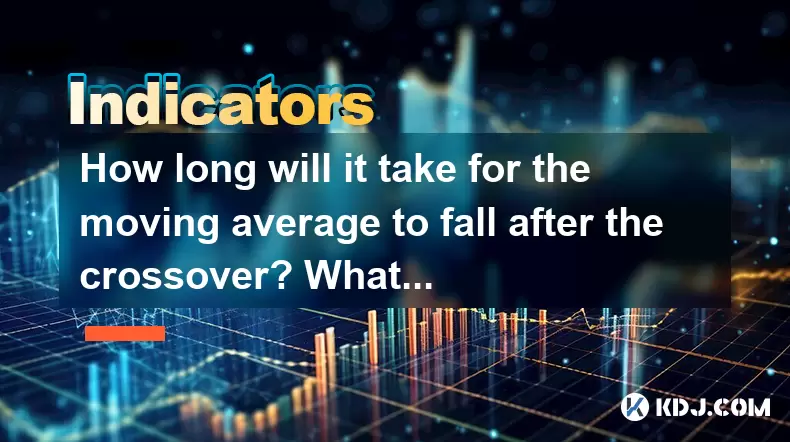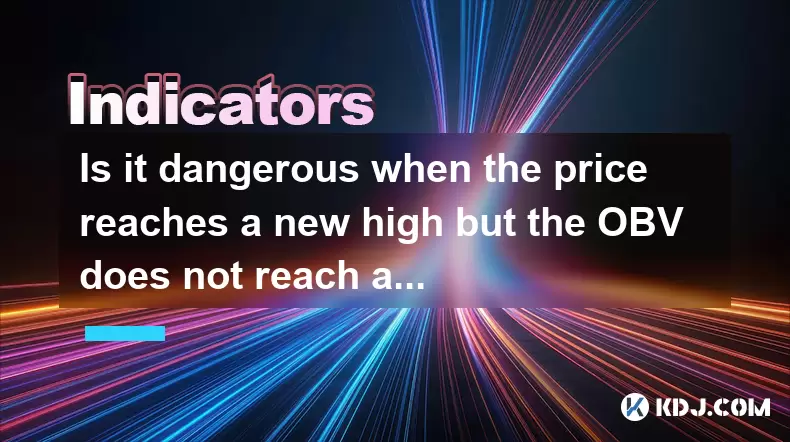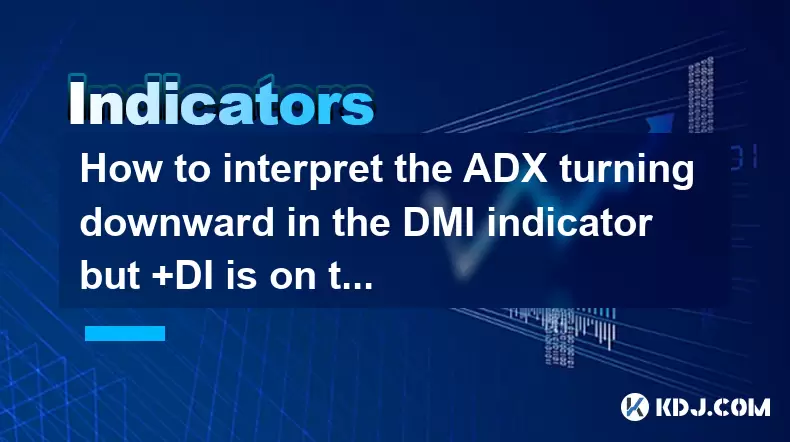-
 Bitcoin
Bitcoin $106,754.6083
1.33% -
 Ethereum
Ethereum $2,625.8249
3.80% -
 Tether USDt
Tether USDt $1.0001
-0.03% -
 XRP
XRP $2.1891
1.67% -
 BNB
BNB $654.5220
0.66% -
 Solana
Solana $156.9428
7.28% -
 USDC
USDC $0.9998
0.00% -
 Dogecoin
Dogecoin $0.1780
1.14% -
 TRON
TRON $0.2706
-0.16% -
 Cardano
Cardano $0.6470
2.77% -
 Hyperliquid
Hyperliquid $44.6467
10.24% -
 Sui
Sui $3.1128
3.86% -
 Bitcoin Cash
Bitcoin Cash $455.7646
3.00% -
 Chainlink
Chainlink $13.6858
4.08% -
 UNUS SED LEO
UNUS SED LEO $9.2682
0.21% -
 Avalanche
Avalanche $19.7433
3.79% -
 Stellar
Stellar $0.2616
1.64% -
 Toncoin
Toncoin $3.0222
2.19% -
 Shiba Inu
Shiba Inu $0.0...01220
1.49% -
 Hedera
Hedera $0.1580
2.75% -
 Litecoin
Litecoin $87.4964
2.29% -
 Polkadot
Polkadot $3.8958
3.05% -
 Ethena USDe
Ethena USDe $1.0000
-0.04% -
 Monero
Monero $317.2263
0.26% -
 Bitget Token
Bitget Token $4.5985
1.68% -
 Dai
Dai $0.9999
0.00% -
 Pepe
Pepe $0.0...01140
2.44% -
 Uniswap
Uniswap $7.6065
5.29% -
 Pi
Pi $0.6042
-2.00% -
 Aave
Aave $289.6343
6.02%
How long will it take for the moving average to fall after the crossover? What does the historical data say?
After a bearish moving average crossover, the speed at which the moving average falls depends on market volatility, volume, and price momentum.
Jun 16, 2025 at 06:02 pm

Understanding Moving Average Crossovers
A moving average crossover occurs when a short-term moving average crosses above or below a longer-term moving average. This technical indicator is widely used in cryptocurrency trading to signal potential trend reversals. In the context of a bearish crossover, such as the 50-day moving average crossing below the 200-day moving average, traders often ask how long it will take for the moving average to fall after the crossover.
The duration and speed at which the moving average declines depend on several factors including price momentum, market sentiment, and volume dynamics. Historical data can provide insights into these patterns.
Key Insight: The time it takes for a moving average to fall post-crossover varies depending on the asset’s volatility and underlying market conditions.
Analyzing Historical Cryptocurrency Data
Historical data from major cryptocurrencies like Bitcoin (BTC) and Ethereum (ETH) shows that after a bearish moving average crossover, the decline in the moving average line typically begins within a few days. However, the full descent may take weeks or even months depending on continued price action.
For example, during Bitcoin’s 2018 bear market, the 50-day MA crossed below the 200-day MA in late July. It took approximately three weeks for the 50-day MA to visibly separate downward from the 200-day MA. During this period, BTC prices continued to drop steadily.
Key Insight: The steeper the price decline following the crossover, the faster the moving average line will fall.
Factors Influencing the Speed of Decline
Several elements influence how quickly a moving average falls after a crossover:
- Market Volatility: High volatility can cause sharp drops in price, accelerating the movement of the moving average.
- Volume Trends: Sustained selling pressure reflected in high volume usually correlates with faster declines.
- Macro Conditions: Broader economic or regulatory news can either prolong or shorten the timeframe.
In highly liquid markets like Bitcoin, moving averages tend to respond more swiftly to new price data compared to smaller altcoins.
Key Insight: Lower-cap cryptocurrencies may show delayed responses due to lower trading volumes and less consistent price discovery.
How to Monitor the Decline Using Trading Platforms
To track how fast the moving average falls after a crossover, follow these steps using platforms like TradingView or Binance’s native charting tools:
- Log into your preferred crypto charting platform
- Select the cryptocurrency pair you're analyzing (e.g., BTC/USDT)
- Add both the 50-day and 200-day moving averages
- Observe the point where the shorter-term MA crosses below the longer-term one
- Measure the number of candles (days or hours) it takes for the 50-day MA to visibly slope downward
Using candlestick charts with daily intervals provides the clearest view of the moving average's trajectory over time.
Key Insight: Enabling grid lines and snapping features on charting tools helps accurately measure the slope and distance between moving averages.
Case Study: Ethereum’s 2022 Bear Market Signal
In mid-May 2022, Ethereum experienced a bearish moving average crossover. Over the next 10 days, the 50-day MA began to visibly slope downward. By early June, it had fallen significantly below the 200-day MA, coinciding with ETH dropping from around $2,600 to under $1,800.
This case illustrates how a strong bearish momentum accelerates the descent of the moving average line. Traders who recognized the early signs of the MA divergence could have taken defensive positions or exited long trades before the sharper drop.
Key Insight: Historical examples reinforce the importance of combining moving average analysis with other indicators like RSI or MACD for confirmation.
Frequently Asked Questions
Q: Can a moving average start falling immediately after a crossover?
Yes, especially if the price continues to fall sharply right after the crossover. The moving average calculation incorporates recent prices, so a rapid decline pulls the line down quickly.
Q: Do all crossovers result in a sustained fall in the moving average?
No. Sometimes a false crossover occurs due to short-term volatility. If the price stabilizes or rebounds soon after, the moving average may flatten instead of continuing to fall.
Q: Is there a difference in how fast moving averages fall on different timeframes?
Yes. On higher timeframes like weekly charts, moving averages change more slowly. On intraday charts, they react faster but are also more prone to noise and false signals.
Q: Should I rely solely on moving average crossovers for trading decisions?
It’s not advisable. Moving averages work best when combined with volume analysis, support/resistance levels, and other technical indicators to improve accuracy.
Disclaimer:info@kdj.com
The information provided is not trading advice. kdj.com does not assume any responsibility for any investments made based on the information provided in this article. Cryptocurrencies are highly volatile and it is highly recommended that you invest with caution after thorough research!
If you believe that the content used on this website infringes your copyright, please contact us immediately (info@kdj.com) and we will delete it promptly.
- 2025-W Uncirculated American Gold Eagle and Dr. Vera Rubin Quarter Mark New Products
- 2025-06-13 06:25:13
- Ruvi AI (RVU) Leverages Blockchain and Artificial Intelligence to Disrupt Marketing, Entertainment, and Finance
- 2025-06-13 07:05:12
- H100 Group AB Raises 101 Million SEK (Approximately $10.6 Million) to Bolster Bitcoin Reserves
- 2025-06-13 06:25:13
- Galaxy Digital CEO Mike Novogratz Says Bitcoin Will Replace Gold and Go to $1,000,000
- 2025-06-13 06:45:13
- Trust Wallet Token (TWT) Price Drops 5.7% as RWA Integration Plans Ignite Excitement
- 2025-06-13 06:45:13
- Ethereum (ETH) Is in the Second Phase of a Three-Stage Market Cycle
- 2025-06-13 07:25:13
Related knowledge

How to interpret the low opening the next day after the long lower shadow hits the bottom?
Jun 18,2025 at 12:22am
Understanding the Long Lower Shadow Candlestick PatternIn technical analysis, a long lower shadow candlestick is often seen as a potential reversal signal in a downtrend. This pattern occurs when the price opens, trades significantly lower during the session, but then recovers to close near the opening price or slightly above. The long wick at the botto...

How to operate the RSI indicator repeatedly in the 40-60 range?
Jun 18,2025 at 12:56am
Understanding the RSI Indicator and Its RelevanceThe Relative Strength Index (RSI) is a momentum oscillator widely used in cryptocurrency trading to measure the speed and change of price movements. Typically, the RSI ranges from 0 to 100, with levels above 70 considered overbought and below 30 considered oversold. However, when the RSI repeatedly stays ...

Why is the volume ratio suddenly enlarged three times but the price fluctuation is small?
Jun 18,2025 at 04:42am
Understanding the Relationship Between Trading Volume and Price MovementIn the world of cryptocurrency trading, volume is a crucial metric that reflects the number of assets traded within a specific time frame. It often serves as an indicator of market interest and liquidity. However, there are instances where trading volume surges dramatically—sometime...

How strong is the MACD golden cross below the zero axis?
Jun 17,2025 at 11:00pm
Understanding the MACD Indicator in Cryptocurrency TradingThe Moving Average Convergence Divergence (MACD) is one of the most widely used technical indicators among cryptocurrency traders. It helps identify potential trend reversals, momentum shifts, and entry or exit points. The MACD consists of three main components: the MACD line, the signal line, an...

Is it dangerous when the price reaches a new high but the OBV does not reach a new high?
Jun 18,2025 at 06:14am
Understanding On-Balance Volume (OBV) in Cryptocurrency TradingIn the world of cryptocurrency trading, technical indicators play a crucial role in analyzing market behavior and predicting future price movements. One such widely used indicator is the On-Balance Volume (OBV), which helps traders assess the strength of buying or selling pressure behind pri...

How to interpret the ADX turning downward in the DMI indicator but +DI is on the top?
Jun 18,2025 at 08:01am
Understanding the Role of Decentralized Finance in Modern Cryptocurrency EcosystemsDecentralized Finance, commonly known as DeFi, has emerged as a cornerstone of the modern cryptocurrency ecosystem. Unlike traditional financial systems that rely on centralized intermediaries like banks and brokers, DeFi platforms operate on blockchain networks to offer ...

How to interpret the low opening the next day after the long lower shadow hits the bottom?
Jun 18,2025 at 12:22am
Understanding the Long Lower Shadow Candlestick PatternIn technical analysis, a long lower shadow candlestick is often seen as a potential reversal signal in a downtrend. This pattern occurs when the price opens, trades significantly lower during the session, but then recovers to close near the opening price or slightly above. The long wick at the botto...

How to operate the RSI indicator repeatedly in the 40-60 range?
Jun 18,2025 at 12:56am
Understanding the RSI Indicator and Its RelevanceThe Relative Strength Index (RSI) is a momentum oscillator widely used in cryptocurrency trading to measure the speed and change of price movements. Typically, the RSI ranges from 0 to 100, with levels above 70 considered overbought and below 30 considered oversold. However, when the RSI repeatedly stays ...

Why is the volume ratio suddenly enlarged three times but the price fluctuation is small?
Jun 18,2025 at 04:42am
Understanding the Relationship Between Trading Volume and Price MovementIn the world of cryptocurrency trading, volume is a crucial metric that reflects the number of assets traded within a specific time frame. It often serves as an indicator of market interest and liquidity. However, there are instances where trading volume surges dramatically—sometime...

How strong is the MACD golden cross below the zero axis?
Jun 17,2025 at 11:00pm
Understanding the MACD Indicator in Cryptocurrency TradingThe Moving Average Convergence Divergence (MACD) is one of the most widely used technical indicators among cryptocurrency traders. It helps identify potential trend reversals, momentum shifts, and entry or exit points. The MACD consists of three main components: the MACD line, the signal line, an...

Is it dangerous when the price reaches a new high but the OBV does not reach a new high?
Jun 18,2025 at 06:14am
Understanding On-Balance Volume (OBV) in Cryptocurrency TradingIn the world of cryptocurrency trading, technical indicators play a crucial role in analyzing market behavior and predicting future price movements. One such widely used indicator is the On-Balance Volume (OBV), which helps traders assess the strength of buying or selling pressure behind pri...

How to interpret the ADX turning downward in the DMI indicator but +DI is on the top?
Jun 18,2025 at 08:01am
Understanding the Role of Decentralized Finance in Modern Cryptocurrency EcosystemsDecentralized Finance, commonly known as DeFi, has emerged as a cornerstone of the modern cryptocurrency ecosystem. Unlike traditional financial systems that rely on centralized intermediaries like banks and brokers, DeFi platforms operate on blockchain networks to offer ...
See all articles

























































































